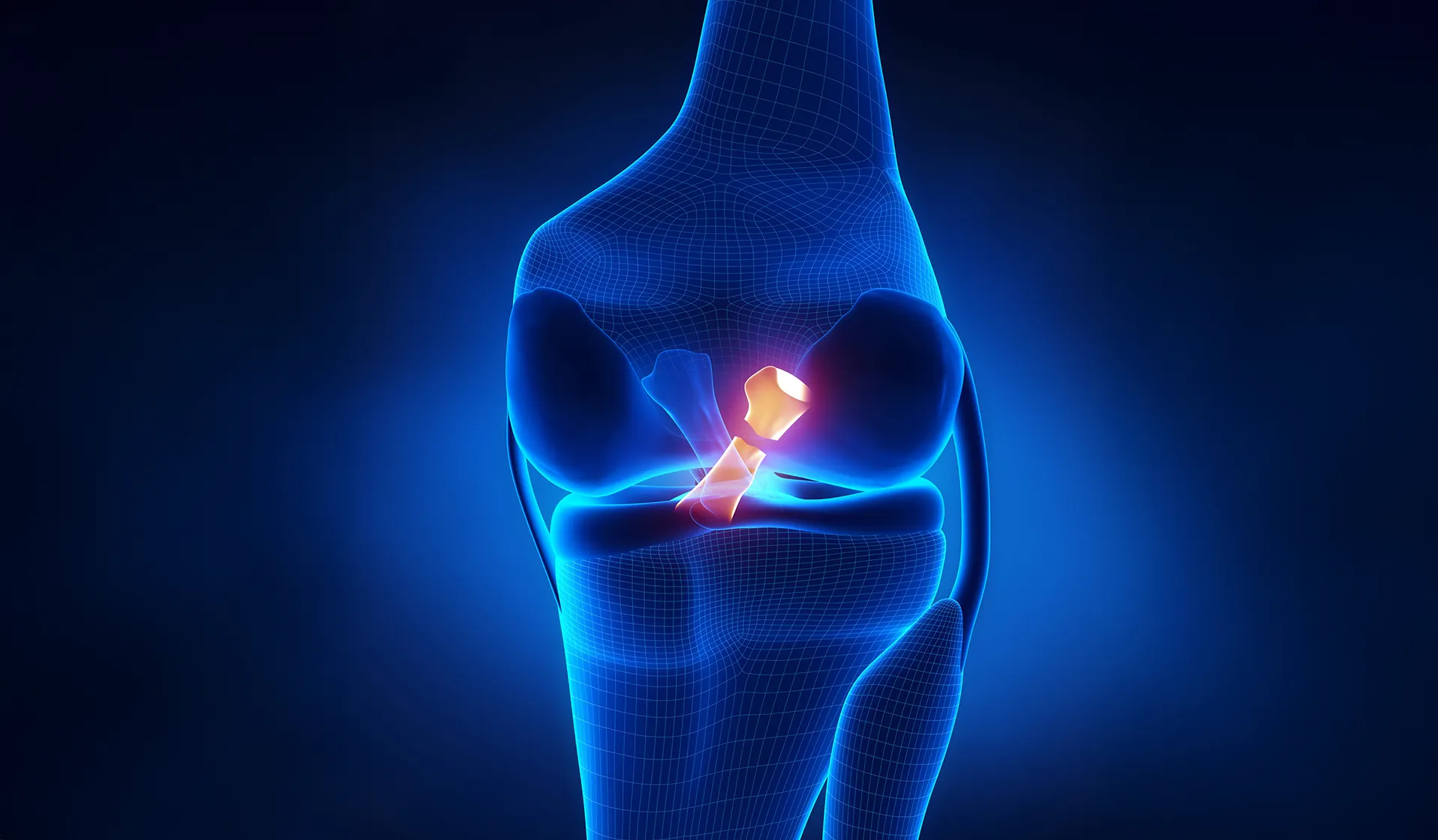Anterior cruciate ligament injuries

OVERVIEW
What many people might not realize is that the knee has two cruciate ligaments: the anterior cruciate ligament (ACL) and the posterior cruciate ligament (PCL). Both play a critical role in stabilizing the knee joint. Among the two, the ACL is the one we hear about most often—unfortunately, usually in the context of an injury.
An ACL injury often results in a long recovery period, sometimes taking up to 12 months, and significantly increases the risk of developing osteoarthritis later in life. This makes injury prevention a top priority. If an ACL injury does occur, following the appropriate treatment and rehabilitation program is essential to ensure the best possible outcome.
The Knee’s Safety Belt
The anterior cruciate ligament (ACL) is located in the center of the knee and acts like a safety belt, preventing unwanted movements and ensuring stability. Tears to the ACL are much more common than injuries to the posterior cruciate ligament (PCL) and often have a greater impact on overall knee function.
ACL injuries are particularly prevalent in sports that require sudden changes in direction, such as soccer, basketball, handball, and downhill skiing. Female athletes are at a significantly higher risk, with studies showing they are up to three times more likely to suffer an ACL injury compared to their male counterparts. These injuries also tend to occur at a younger age in female athletes, making prevention and early intervention critical.
Characteristics of a Torn Cruciate Ligament
One of the hallmark signs of a cruciate ligament injury is swelling that develops shortly after a twisting movement, often accompanied by a sensation of the knee “giving way.” Difficulty in straightening the leg or bending the knee beyond 80 to 90 degrees is also common. If any of these symptoms occur, it’s important to seek a medical evaluation.
Additional Injuries
Cruciate ligament injuries often involve damage to other structures in the knee, such as the meniscus, cartilage, bones, or collateral ligaments. These additional injuries can contribute to the symptoms and significantly impact both treatment options and the long-term prognosis. For this reason, an MRI scan and evaluation by a specialist are crucial soon after the injury.
Treatment
Surgery is not always necessary for an ACL injury. In fact, many ACL injuries, particularly those without significant additional damage, can be managed conservatively through intensive rehabilitation. The decision to pursue surgery depends on the severity of symptoms and the functional demands placed on the knee, particularly for athletes. For instance, elite football players or downhill skiers are more likely to require surgery than those participating in sports like cycling or cross-country skiing.
For athletes without severe additional injuries, a trial of intensive physiotherapy lasting up to three months is often recommended before considering surgery. This approach helps predict the potential success of surgery and enhances post-surgical rehabilitation if an operation becomes necessary.
Surgery
ACL surgery involves replacing the torn ligament with a tissue graft, often taken from the hamstrings or quadriceps. This minimally invasive procedure is performed using an arthroscope and small incisions, reducing recovery time compared to open knee surgery.
Rehabilitation
Rehabilitation following an ACL injury, whether or not surgery is performed, is demanding. It requires close monitoring by a physiotherapist and typically lasts 6 to 12 months. The rehabilitation process focuses on restoring strength, mobility, balance, and knee control. Exercises gradually increase in intensity and are tailored toward the athlete’s specific sport as their function improves.
Return to Sport
While some elite athletes have returned to competitive sports in less than six months, such an aggressive timeline is generally not advised. Rushing the rehabilitation process can increase the risk of re-injury. A well-paced recovery and adherence to a structured rehabilitation program significantly reduce this risk and improve long-term outcomes.
Readiness for Return to Sport
Before returning to sport, the athlete should undergo a series of sport-specific tests to assess whether their knee is ready to handle the demands of their activity. However, passing these tests is only part of the equation. It is equally important for the athlete to feel mentally prepared and confident in their knee’s stability. Trust in the knee and a lack of fear of re-injury are critical factors in ensuring a safe and effective return to sport.
Overall Assessment
The decision to resume sports should be a collaborative process involving the athlete, their doctor, physiotherapist, and trainer. The trainer, who often observes the athlete in a sport-specific context, plays a key role in evaluating their movements and readiness. A gradual return to participation is essential, starting with lighter activities and progressively increasing the intensity.
Athletes recovering from cruciate ligament injuries are at a higher risk of re-injury, not only to the previously injured knee but also to the opposite knee. For this reason, ongoing preventative training is especially critical for this group to reduce the likelihood of future injuries.
How Do Cruciate Ligament Injuries Occur?
Understanding how cruciate ligament injuries happen is key to preventing them and ensuring effective treatment. These injuries often occur in sports like soccer, handball, and downhill skiing due to specific biomechanical and environmental factors. Researchers, including those from the Oslo Sports Trauma Research Center, have spent years studying the mechanics of these injuries to better understand and address their causes. For more information about the mechanisms of cruciate ligament injuries in these sports, explore the detailed resources linked on this page.
